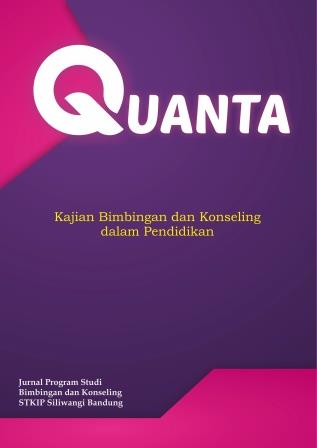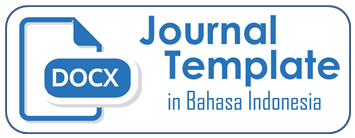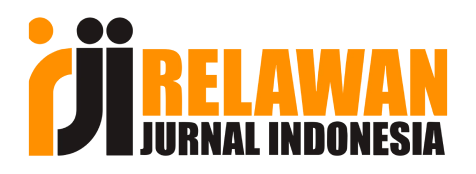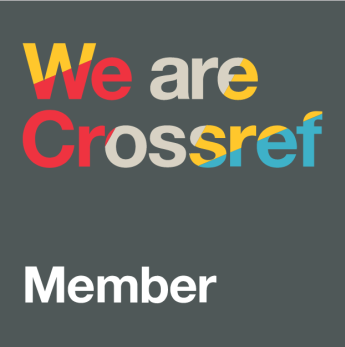EVALUASI TERHADAP IMPLEMENTASI STUDENT-CENTERED LEARNING DI PERGURUAN TINGGI
DOI:
https://doi.org/10.22460/q.v4i1p1-8.1605Keywords:
Kata kunci, Evaluasi, Implementasi, Student-Centered LearningAbstract
Student centered learning merupakan salah satu pendekatan dalam pengajaran. Pendekatan ini menempatkan manusia sebagai manusia, menempatkan peserta didik sebagai subyek, bukan obyek. Student Centered Learning memberikan kebebasan kepada mahasiswa untuk memiliki kesempatan untuk menggali sendiri ilmu pengetahuannya sehingga akan didapat pengetahuan yang mendalam. Proses pembelajaran berbasis student centered learning (SCL) sudah banyak diterapkan sekolah dasar maupun ditingkat sekolah menengah. Penelitian ini bertujuan untuk mengeksplorasi pelaksanaan student centered learning di level perguruan tinggi. Pelaksanaan penelitian ini dilakukan di Program studi Bimbingan dan Konseling Universitas PGRI Adi Buana Surabaya. Subyek atau peserta adalah mahasiswa yang memprogram mata kuliah Asesmen Psikologi Teknik Non Tesyang berjumlah 34 orang. Hasilnya menunjukkan bahwa masih banyak kendala dalam pelaksanaan SCL pada mahasiswa, walaupun sebenarnya level mahasiswa sudah mampu berfikir analitik. Kendala yang dialami kemampuan mahasiswa dalam mengemukakan pendapat sehingga kelihatan pasif. Sumber daya lingkungan juga masih terbatas, akses untuk mendapatkan informasi masih kurang. Dosen sebagai fasilitator juga dituntut trampil dan kreatif dalam menyusun kurikulum.References
Alper, L., Fendel, D., Fraser, S., & Resek, D. (1996). Problem-based mathematics: Not just for the college-bound. Educational Leadership, 53(8), 18–21. Baeten, M., Kyndt, E., Struyven, K., & Dochy, F. (2010). Using student-centred learning environments to stimulate deep approaches to learning: Factors encouraging or discouraging their effectiveness. Educational Research Review, 5(3), 243–260. https://doi.org/10.1016/j.edurev.2010.06.001 Barab, S., & Landa, A. (1997). Designing effective interdisciplinary anchors. Educational Leadership, 56(6), 52–55. Brown, J., Collins, A., & Duguid, P. (1989). Situated cognition and the culture of learning. Educational Researcher, 18(4), 32–42. Brush, T., & Saye, J. (2000). Implementation and evaluation of a student-centered learning unit: A case study. Educational Technology Research and Development, 48(3), 79–100. https://doi.org/10.1007/BF02319859 Duffy, T., & Jonassen, D. (1991). Constructivism: New implications for instructional technology? Educational Technology, (May), 3–16. Felder, R. M. (2009). ACTIVE LEARNING: AN INTRODUCTION. ASQ Higher Education Brief, 2(4). Gallagher, S. ., & Stepien, W. J. (1996). Content acquisition in problem-based learning: Depth versus breadth in American studies. Journal for the Education of the Gifted, 19(3), 257–275. Glasgow, N. (1997). New curriculum for new times: A guide to student-centered, problem-based learning. Thousand Oaks: Corwin. Hannafin, M., Hill, J., & Land, S. . (1997). Student-centered learning and interactive multimedia: Status, issues, and implication. Contemporary Education, 68(2), 94–99. Johnson, D. W., & Johnson, F. (1992). Joining Together: Group Theory and GroupSkill (4th ed.). Englewood Cliffs: rentice Hall Inc. Kember, D. (2009). Promoting student-centred forms of learning across an entire university. Higher Education, 58(1), 1–13. https://doi.org/10.1007/s10734-008-9177-6 Kozulin, A., Gindis, B., Ageyev, V. S., & Miller, S. M. (Eds.). (2003). Vygotsky’s Educational Theory in Cultural Context. New York: Cambridge University Press. Means, B. (1994). Introduction: Using technology to advance educational goals. In B. Means (Ed.),
Tech-nology and education reform: The reality behind the promise. San Francisco: Jossey-Bass. Savery, J. R., & Duffy, T. M. (1995). Problem based leaming: An instructional model and its constructivist framework. Educational Technology, 35(5), 31–38. Slavin, R. E. (2006). Educational Psychology: Theory Into Practice (ninth). USA: Pearson Education, Inc.
Downloads
Published
How to Cite
Issue
Section
License
Quanta: Jurnal Kajian Bimbingan dan Konseling dalam Pendidikan is licensed under a Creative Commons Attribution-ShareAlike 4.0 International License. Authors who publish with the Quanta Journal agree to the following terms:
- Authors retain copyright and grant the journal right of first publication with the work simultaneously licensed under a Creative Commons Attribution License that allows others to share the work with an acknowledgment of the work's authorship and initial publication in this journal.
- Authors are able to enter into separate, additional contractual arrangements for the non-exclusive distribution of the journal's published version of the work (e.g., post it to an institutional repository or publish it in a book), with an acknowledgment of its initial publication in this journal.
- Authors are permitted and encouraged to post their work online (e.g., in institutional repositories or on their website) prior to and during the submission process, as it can lead to productive exchanges, as well as earlier and greater citation of published work.




























